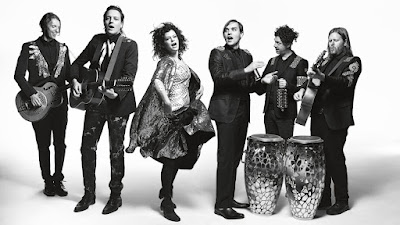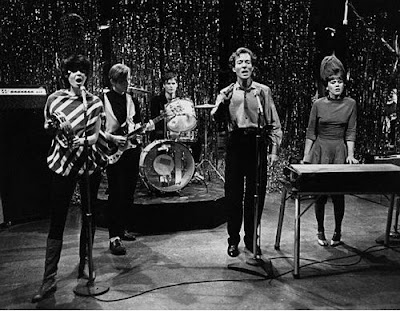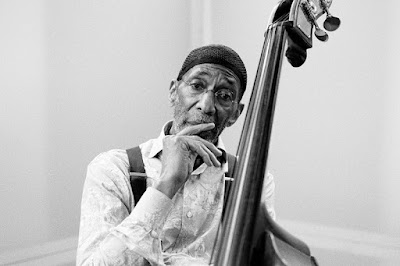I was inspired by a podcast called The 500 hosted by New York-based comedian Josh Adam Meyers. His goal, and mine, is to explore Rolling Stone Magazine's 2012 edition of The 500 Greatest Albums of All Time.
Album: #150
Album Title: Darkness On The Edge Of Town
Artist: Bruce Springsteen
Genre: Rock, Heartland Rock,
Recorded: Atlantic and Record Plant Studios, New York City, USA
Released: June, 1978
My age at release: 12
How familiar was I with it before this week: Fairly
Is it on the 2020 list? Yes, at #91 - rising 59 spots
Song I am putting on my Spotify Playlist: Darkness On The Edge Of Town
In the summer of 1989, I took a job at Morphy Containers, a box-making factory in London, Ontario. My first assignment was the “Bailer”. The work involved wheeling a cart through the vast factory floor, sticking to the clearly marked aisleways and steering clear of the whirring machines that sliced, perforated, folded and painted cardboard into boxes and other products for shipping to companies throughout Canada and the United States.My task was to collect the scraps of cardboard discarded from the production lines. For example, large, rectangular sheets of waxed cardboard were fed into a bus-sized machine that punched out circles destined to support frozen pizza products soon to hit Ontario grocery shelves. My job was to gather discarded remnants left behind after the circles were gathered and stacked by busy workers at the machine’s far end.As I walked around the factory floor, I drowned out these cacophonous mechanisms with headphones connected to my portable CD player. That summer, my favourites were Don Henley’s End Of The Innocence (#389 on The 500) and the soundtrack to the Martin Scorsese film The Passion Of The Christ by Peter Gabriel. Because I wasn’t working with the many clanking contraptions around the facility, I was permitted to wear headphones connected by wires to a device.I was a solid bailer – efficient and dependable. Within weeks, I earned a raise, a whole 50 cents an hour, along with a promotion to the cutting machine. That’s when things went sideways and I realized too late that I should have declined the offer. First, I had to retire my trusty CD player. Then came the safety glasses and a gigantic pair of noise-cancelling headphones, gear that made me feel less like an employee and more like part of these iron giants. The opening scene in Charlie Chaplin’s Modern Times – where he is trapped in the cogs of a factory apparatus – always comes to mind when I think of those days.By the end of day one, I knew I’d made a terrible mistake. The job was mind-numbingly monotonous. For eight hours a day (minus the sacred coffee and cigarette breaks), I stood at the end of a machine, catching sheets of cardboard launched at me by a grizzled veteran who looked like he’d been born beside that cutter. Every ten sheets, I’d pivot like a robot and stack them on a wooden pallet. The only brief reprieve was when the stack reached about five feet high and we would wrap it in cellophane and call over the forklift operator to remove it…only to begin anew. It was silent. It was soul-sucking. It was cardboard purgatory. I watched enviously as my successor bailer wandered by with his cart and his freedom…music blasting away in his headphones.This would be my one, and only, factory job. I survived it for the summer and redoubled my efforts in university that fall. It was a good experience because it showed me the challenging world of blue-collar labour firsthand. It’s a world captured with raw honesty and poetic grit by Bruce Springsteen – affectionately known by his fans as “The Boss”. Springsteen has long been a voice for the common man, chronicling the struggles, hopes, and quiet heroism of the working class. His lyrics, nurtured in the sweat and soul of factory floors, union halls, and small-town dreams, gave resonance to what I experienced that summer. The songs on Darkness On The Edge Of Town (#150 on The 500) echoed the realities of millions of people, reminding us that dignity and hardship often work hand in hand.Released in 1978, Darkness on the Edge of Town marked a turning point in Springsteen’s career. The introspective follow-up to the breakout success of his third studio release, Born to Run (#18 on The 500), included lyrics stripped of the romanticism found in Springsteen’s earlier works. Darkness on the Edge of Town delves into themes of disillusionment, resilience, and the quiet dignity of working-class life. Springsteen trades youthful exuberance for a mature, hard-earned realism with songs such as Badlands, The Promised Land, and the haunting title track,. The album’s raw sound and lyrical depth cemented his role not just as a rock icon, but as a storyteller about the common man.Springsteen has a knack for capturing the tension between hope and hardship with unflinching honesty. In 2009, he was honoured at The Kennedy Center For Performing Arts in New York City with a Lifetime Achievement Award for his contributions to American Culture. Fellow New Jersey native and comedian Jon Stewart introduced Springsteen gave a witty, heartfelt and reverent speech that highlighted his (and by extension many fans’) admiration for Springsteen’s legacy.As Stewart put it:
“Whenever I see Bruce Springsteen do anything, he empties the tank – every time. He has never once performed without total commitment to his family, his art, his audience, and his country.”
The seventh track on Darkness On The Edge Of Town is simply called Factory. A lyric from it has resonated with me since my first listen:
“Factory takes his hearing, Factory gives him life.”
Those eight simple words capture the paradox of a working class existence for so many – the price they pay for earning a living..
I’m thankful that noise-cancelling headphones were mandatory for me in 1989. Not only did they preserve my hearing, they gave me time with my thoughts and, although I was just a tourist in the blue collar world, I learned to respect their tolerance of tedium and monotony to support themselves and their families.


















.jpg)










.jpg)
.jpg)






.jpg)




